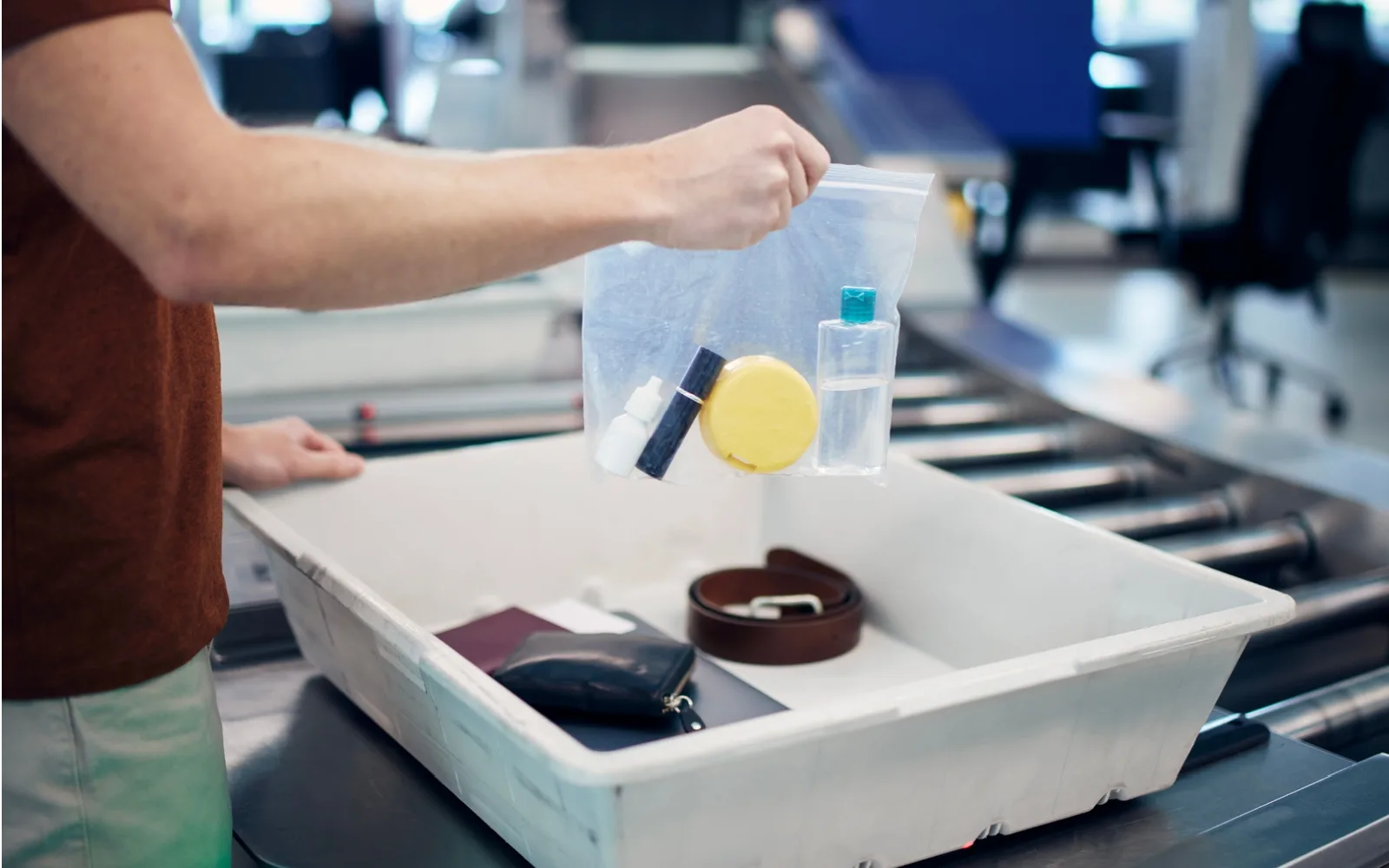Understanding the TSA’s rules for liquids – amounts, what counts as a liquid, and how many containers you can bring – can be confusing as you’re packing up for a trip.
Use this carry on liquid guide to learn the ins and outs of bringing liquids on a plane, when liquids need to be in checked baggage, and how to pack liquids for faster TSA clearance.
Your next airport experience will be much smoother and worry-free when you’ve got a carry on liquid guide to reference!
What to Know About the TSA’s Carry On Liquid Rules
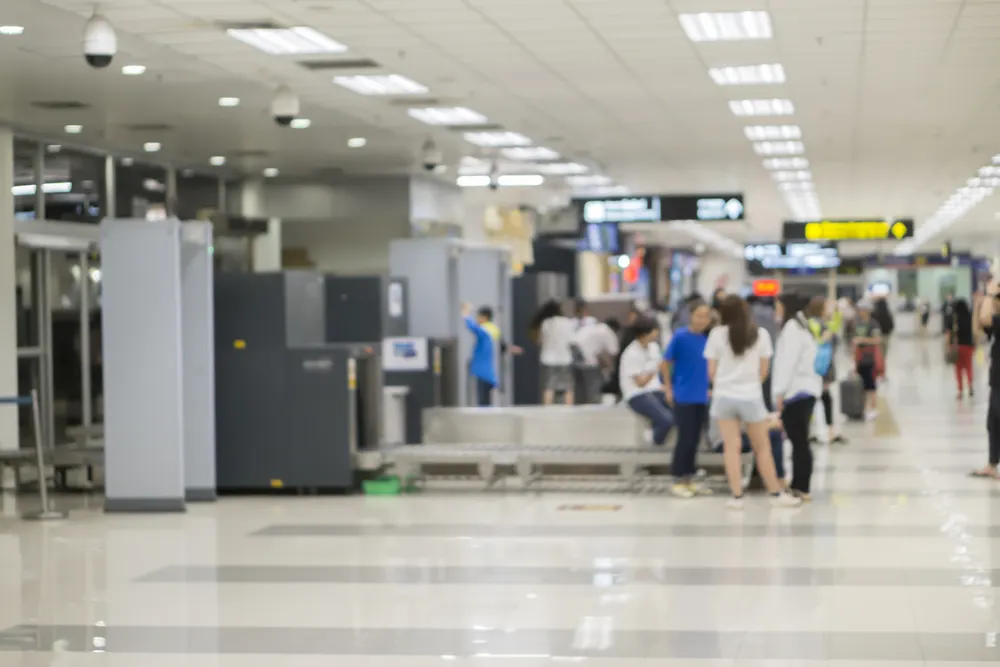
Have a nice day Photo/Shutterstock
The Transportation Security Administration (TSA) has strict rules and limits in place for the amounts and types of carry on liquids you can bring with you on a plane.
With these limitations in place, airline passengers aren’t able to bring large amounts of liquids in carry on bags. And it’s not just liquids that count – creams, gels, and pastes are included in these rules as well.
The limits require that all liquids, creams, gels, and pastes must be 3.4 ounces or smaller with additional limits on the number of liquid containers that can be brought aboard. We’ll cover this in more detail in the next section.
TSA carry on liquid rules are part of enforcing passenger and airline staff safety and national security. The carry on liquid limits were first applied after British terrorists attempted to bring liquid explosives on planes in August 2006.
With these liquid limits in place for carry on bags, bad actors aren’t able to sneak dangerous liquid explosives onto aircraft in amounts that would result in a catastrophic detonation.
So while making sure your carry on items meet the liquid rules put in place by the TSA can be frustrating, there’s a good reason for the limits!
The Complete Carry On Liquid Guide for Plane Passengers
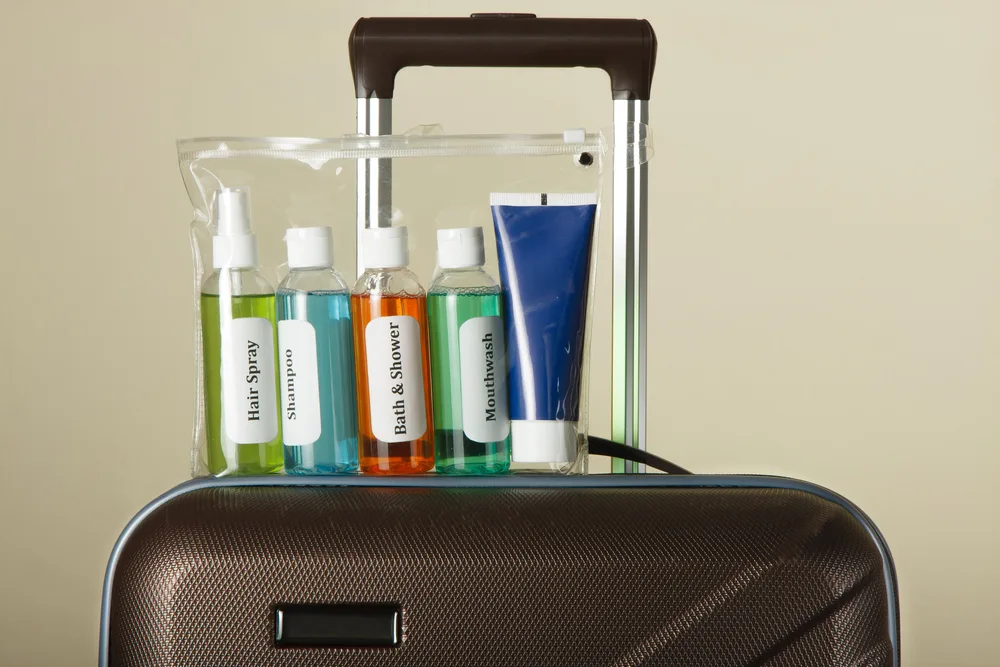
Evan Lorne/Shutterstock
If you’ve got a flight to catch soon, you’ll want to review this carry on liquid guide to ensure you’re meeting all the TSA requirements and regulations for liquids and similar items you may want to bring in your carry on bag.
The TSA carry on liquid guide states that all liquids, creams, gels, and pastes must follow what they call the 3-1-1 rule.
- 3: You are limited to 3.4 ounce or smaller containers of liquids and related substances
- 1: All the allowed 3.4 ounce containers must fit into 1 clear plastic quart-sized bag
- 1: You are limited to 1 clear plastic quart-sized bag to hold your liquid containers
Liquid container sizes must be 3.4 ounces (100 milliliters) or less. That means partially-emptied containers larger than 3.4 ounces are not permitted and may be thrown out by a TSA agent or need to be placed in your checked baggage.
You’re allowed to bring as many 3.4 ounce (or smaller) containers as you can reasonably fit into a sealed clear plastic quart-sized bag.
That’s usually about nine 3.4 ounce containers for reference. You may be able to fit more than 9 containers into the quart-sized bag if some of the containers are smaller than 3.4 ounces.
Make sure you pack up all the necessary liquid items you need into a single quart-sized bag – that’s all you’re allowed according to the TSA carry on guide.
What Counts as a Liquid in Your Carry On Bag?
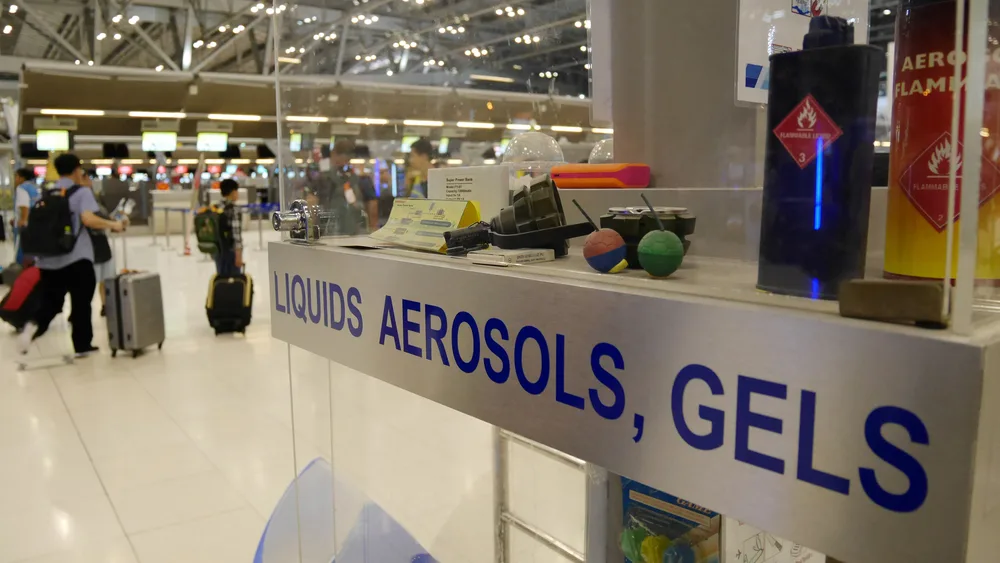
Liquids, aerosols, and gels display at Suvarnabhumi International Airport Bangkok, Thailand/ShutterStockStudio/Shutterstock
The TSA considers liquids, creams, gels, and pastes subject to the liquid limitations for carry on bags. Here’s a partial list of the items that count as a “liquid” in your carry on.
- Toothpaste
- Shampoo/conditioner
- Body wash
- Deodorant
- Lotion
- Sunscreen
- Aloe gel
- Mascara
- Foundation
- Setting spray
- Hair products
- Perfume
- Nail polish
- Contact lens solution
As you can see, many of the items that fall under the TSA liquid rules aren’t actually liquids. The general rule is that if the substance is free-flowing, it counts as a liquid and has to be in a 3.4 ounce or smaller container.
Many hygiene and cosmetics products fall under the liquid rules, but not all. Solid and powder deodorant are allowed in your carry on bag in sizes larger than 3.4 ounces since they aren’t free-flowing.
Powder foundation, baby powder, and similar items are also not part of the TSA liquid rules, but they’ll still need to be placed in a separate bin for X-ray screening.
How to Pack Liquids in Your Carry On Bag
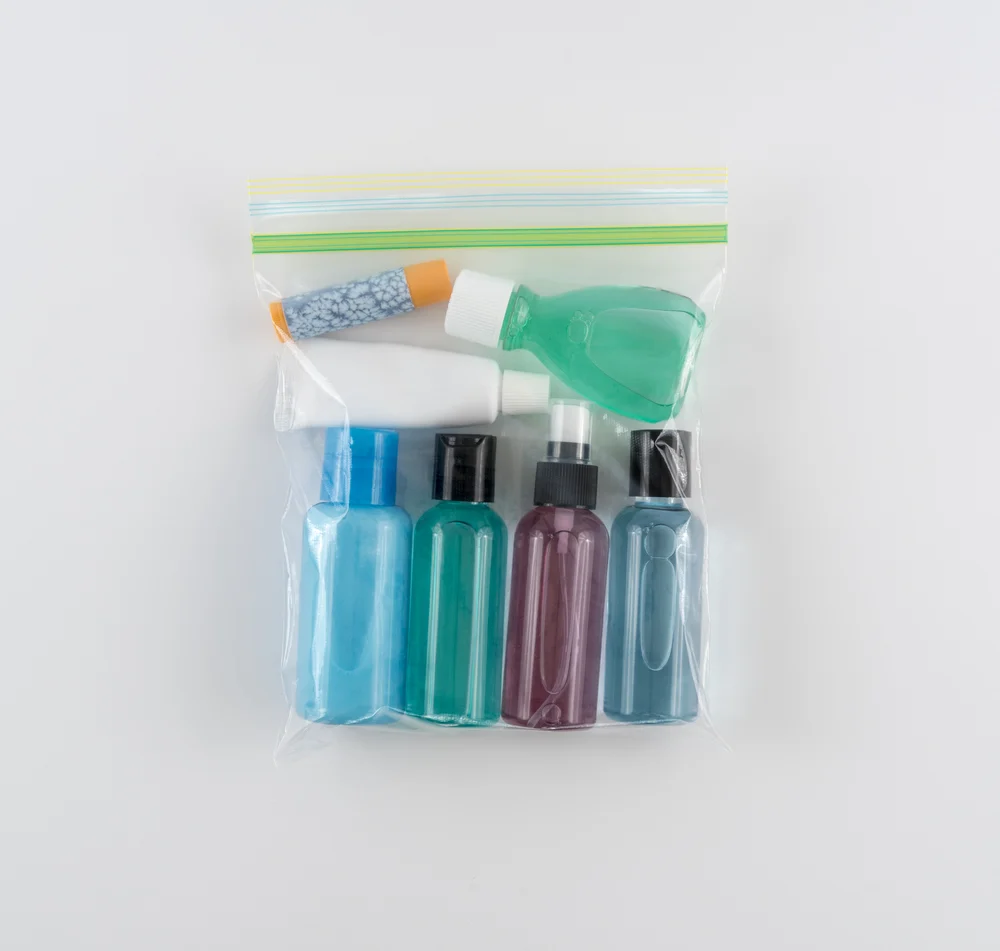
Kris Black/Shutterstock
You can bring as many of the items listed above as needed in your carry on bag as long as each container measures 3.4 ounces (100 milliliters) or less and they all fit into a single clear quart-sized bag.
Travel-sized items usually fit within these guidelines. You can also purchase refillable clear containers and add your liquid items to them, ensuring they all fit into a single quart-sized bag.
Placing your liquid items into a clear quart-sized bag serves a dual purpose:
- Enables TSA agents to quickly assess and screen your liquid items
- Prevents your liquid items from spilling or leaking into your bag
Many people use disposable plastic quart-sized zipper-lock bags, but you can find TSA-approved quart-sized clear cosmetics and reusable bags readily online and at the airport if needed.
Liquid Limits for Inbound International Flights
If you’re traveling to the United States with a connecting flight and purchase duty-free liquid or liquid-like items internationally, you may be able to bring those items in your carry on bag.
These duty-free liquids can be larger than 3.4 ounces or 100 milliliters, but only if they meet certain criteria. Duty-free liquids and liquid-like items have to meet the following TSA criteria for inbound international flights:
- The liquids are secured in clear, tamper-evident bags packed by the retailer
- You purchased them internationally and travel to the US with a connecting flight
- You have the original receipt for the purchased liquids
- You purchased the liquid items within 48 hours of your connecting flight
Even if you follow all of these rules, your items will still be screened and cleared by the TSA. If any of the items set off an alarm or can’t be properly screened, you won’t be allowed to keep them in your carry on.
If you’re bringing liquids in containers larger than 3.4 ounces and don’t have them in a clear, secure, tamper-evident bag, they must go into your checked baggage instead of your carry on bag.
Exemptions to TSA Liquid Rules
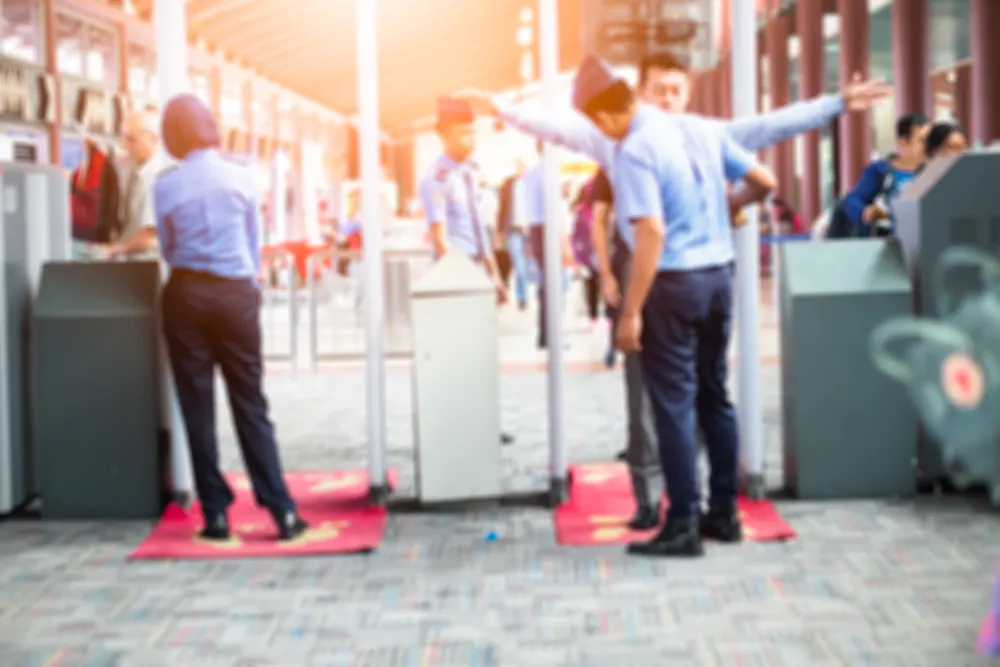
Thaspol Sangsee/Shutterstock
While the TSA liquid rules are strict, there are some notable exemptions you should know about. Certain liquid and liquid-like items are permitted in larger amounts than 3.4 ounces and may not need to be stored in a clear, quart-sized bag.
- Liquid medications
- Baby and child nourishment
- Cooling packs for exempted items
These exemptions are subject to the TSA officer’s judgement and they will make the final decision on whether an item is permitted or not.
Liquid Medications
Liquid, medically-necessary medications are allowed in sizes larger than 3.4 ounces and don’t need to be stored in a clear quart-sized bag. Let your TSA officer know that you have medications and present them for screening.
Baby and Child Nourishment
Breastmilk, baby formula, jarred/canned baby food, and teethers filled with liquid or gel are permitted in amounts greater than 3.4 ounces. Remove them from your carry on and let the TSA agent know what they are for screening.
Cooling Packs
If your liquid medications or baby/child nourishment items require cooling packs or ice packs to stay within a certain temperature range, the TSA permits you to bring them.
As always, just make sure to let the TSA officer know what they’re for and present them separately for screening.
What About Hand Sanitizer?
The TSA made a temporary exception to the 3-1-1 rule during the COVID-19 pandemic, allowing passengers to carry up to 12 ounces (in one oversized container) of hand sanitizer in a carry on bag.
That rule has since expired, but it’s good to know that emergency exceptions are made to TSA liquid rules when called for.
Things to Consider
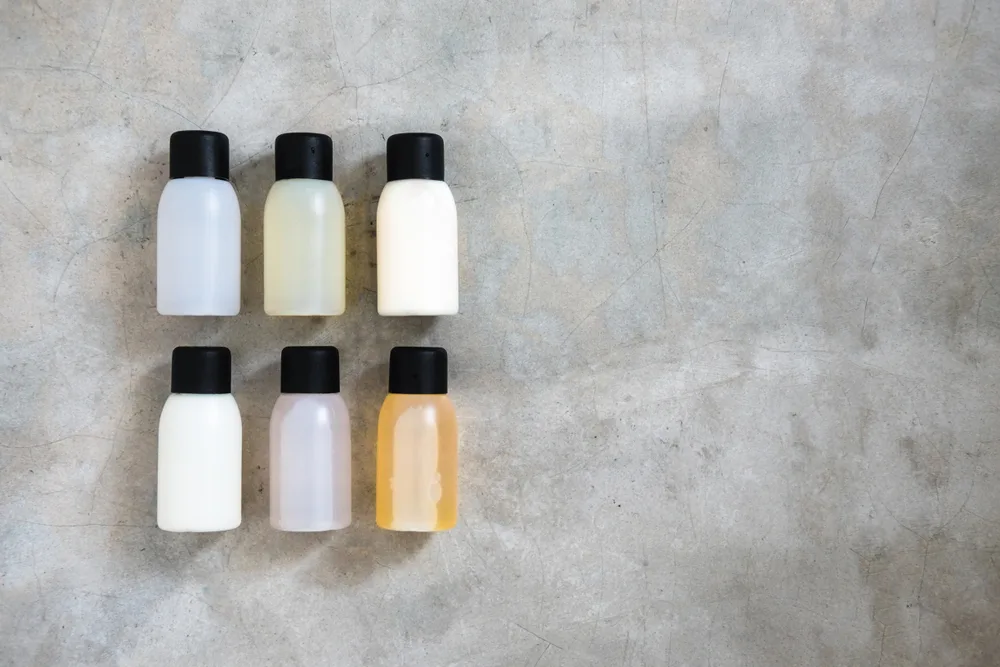
July Prokopiv/Shutterstock
Getting through airport security quickly and smoothly is every traveler’s goal. Keep these things in mind to make your TSA screening process as painless as possible!
- Only bring essentials in your carry on. Since carry on liquids have to meet these stringent requirements, it’s a good idea to only bring the items that are truly essential in your carry on. Everything else can be packed in your checked luggage and won’t need to meet these liquid requirements.
- Purchase refillable travel containers. If you want to bring a favorite perfume, contact lens solution, or lotion that you already own in a size larger than 3.4 ounces, the small TSA-approved refillable containers are a life-saver. Just fill them up with your items, close them securely and wrap tape around the lid, and pack them into your clear quart-sized bag.
- Consider buying goods at the airport. It might be more expensive, but it’s the easiest way to ensure your carry on liquid items are TSA-approved and in the proper size. Toothpaste, shampoo, deodorant, body wash, lotion, and more can be purchased at the airport, tossed into a clear quart-sized bag, and easily screened at the TSA checkpoint.
- Plan extra time for TSA security screening. Usually, you’ll be able to pass through the TSA security checkpoint and screening process pretty quickly, but if an item unexpectedly sets off an alarm or requires additional screening, you could spend longer than you intended getting through airport security. Leave extra time just in case TSA screening takes longer than you think.
- Apply for TSA PreCheck®. TSA PreCheck® ($78 for a 5 year membership) enables you to seamlessly go through security in about 5 minutes without the 3-1-1 liquids rule, removing your shoes, etc. The online application takes a few minutes to fill out, then you’ll make an appointment for fingerprinting, criminal background check, and provision of identity documents.
Frequently Asked Questions
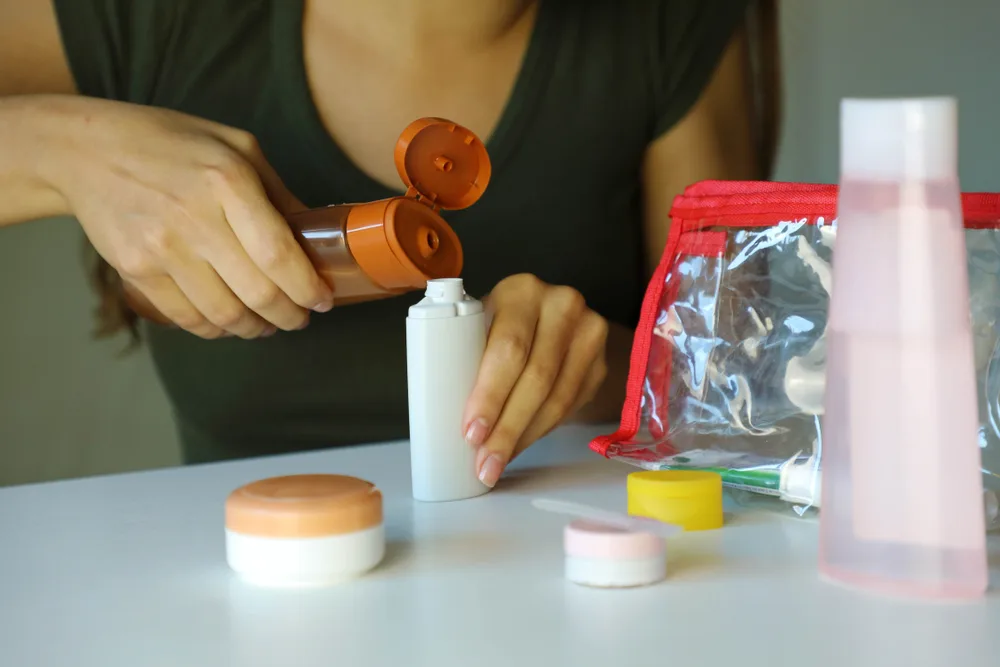
Zigres/Shutterstock
We’ve attempted to cover all the rules in this carry on liquid guide, but if you have additional questions, check the FAQs to find your answer!
How many 3 oz bottles can I take on a plane?
You can fit about 9 bottles (3.4 oz. or smaller) containing liquids, creams, gels, or pastes into a single clear, quart-sized bag placed in your carry on bag.
If you’re carrying some items smaller than 3.4 oz., you will be able to fit more items in the single quart-sized bag.
Can I bring 4 oz liquid on carry on?
No. A 4 oz. liquid container must be packed in your checked baggage. Every liquid, cream, gel, or paste container in your carry on must be 3.4 oz. (100 milliliters) or smaller to be permitted by the TSA.
The TSA takes rules for liquid container sizes very seriously to keep passengers, staff, and the nation safe.
Don’t try to bring larger liquid containers in your bag, as it’ll just be confiscated, placed in your checked baggage, and delay the screening process.
Does toothpaste count as a liquid?
Yes, toothpaste counts as a liquid since it’s considered free-flowing by the TSA. Liquids, creams, gels, and pastes all count as liquids under TSA rules.
If you want to bring toothpaste in your carry on bag, you’ll need to purchase a travel-sized toothpaste that measures 3.4 oz. (100 mL) or less.
Do you still have to put liquids in plastic bags in 2023?
Yes, you still have to put carry on liquids in a plastic bag to pass through TSA security screening.
Liquids must be in containers 3.4 oz. or smaller and all liquid containers must fit into a single transparent quart-sized bag that closes securely.
Zipper-lock bags and TSA-approved clear plastic bags (like cosmetic bags) may be used to hold liquid containers in your carry on bag.
Do I have to put all my toiletries in a plastic bag?
It depends. Toiletries packed in your checked luggage don’t have to be packed in a plastic bag, but doing so can help ensure the containers don’t leak into your luggage.
Carry on toiletries need to be 3.4 oz. or smaller and fit into a single clear quart-sized bag that closes securely.
Use This Carry On Liquid Guide to Streamline Future TSA Clearance
Don’t fret too much about bringing essential toiletries and liquid items in your carry on bag – as long as you follow the rules in this carry on liquid guide, you’ll be all set for fast and simple TSA security clearance.
Remember the basics: No containers larger than 3.4 ounces or 100 mL, all liquid containers packed into a single, clear quart-sized bag that seals securely, and any exempted items presented to a TSA officer for separate screening.
Though the rules are strict and can be confusing, they’re simple enough to follow once you’ve reviewed the guidelines.
Now that you can look forward to streamlined TSA security screening, it’s all smooth sailing – or flying – from here!



